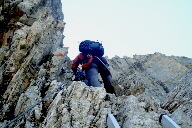-
 37207 Hits
37207 Hits
-
 92.32% Score
92.32% Score
-
 38 Votes
38 Votes
|
|
Mountain/Rock |
|---|---|
|
|
46.57727°N / 7.98380°E |
|
|
Scrambling, Via Ferrata |
|
|
Summer |
|
|
8737 ft / 2663 m |
|
|
OVERVIEW
The Eiger Rotstock is a 2663m rocky summit in the Bernese Oberland of Switzerland. Somewhat dwarfed by its parent, the mighty Eiger3970m, it is easily overlooked. Nonetheless it is a fine little peak and fantastic viewpoint from which to admire stunning scenery at the heart of one of the most attractive corners of the Swiss Alps.
The mountain is accessed from either of two of the stations on the famous Jungfraubahn mountain railway.
There are two main ‘hiking’ routes up the Rotstock – routes within the capabilities of normal individuals (other routes would involve a liking for overhanging rock). The easiest is to start from the Eigergletscher station at 2320m and ascend the shaley ledges of the lower west flank of the Eiger – before scrambling up the back of the pinnacle like summit, as viewed from Kleine Scheidegg. This takes about an hour – or two if a lower start is made from Kleine Scheidegg at 2061m.
The other and best route is a Via Ferrata
- which has the audacity to encroach into a tiny part of the notorious north wall of the Eiger. Nonetheless the overall grade is only K3 and the modest difficulties are of the order of a few mildly exposed ladder sections at the start but then easy rocky scrambling for the remainder.
The Via Ferrata starts at the very western end of the Eigerwand, stepping straight out of the sunny verdant green of the meadows above Alpiglen – and straight into a shadowy world between walls of vertical and even overhanging rock, as the route ascends a huge cleft up and round to reach the Rotstock summit –at the lower end of the long west flank of the Eiger.
Indeed, the Via Ferrata can be used as an alternative and more enjoyable means of accessing the Eiger West Flank – avoiding the more mundane plod up 400m of shale and rubble ledges round the back of the Rotstock.
Viewed from close up, the Rotstock looks to be a formidable peak in its own right. From a northerly perspective it is like a summit from the Dolomites with a plunging precipice of over 400m and craggy outline. Sadly this perception diminishes as you move further away – and its size in relation to the shear vastness of the rest of the Eiger – and of the even bigger Monch and Jungfrau, becomes more apparent.
But this 2663m view point is definitely worth a visit.
The summit of the Rotstock is a small rocky platform adorned with a big cross. Peer if you dare over the northern edge into 400m of empty space down to the meadows above Kleine Scheidegg and Alpiglen. Looking east is the huge Eiger west flank – and of course the impossible profile of the north wall, whose scale just defies imagination. Looking to the south there are the snow encrusted bastions of the Monch and Jungfrau, towering overhead. All these sights do somewhat diminish the loftiness of the view point – until you look northwest out over Kleine Scheidegg and the Grindlewald valley. Then there is the impression of being on an actual mountain in its own right, with the meadows, pine forests and colourful roof-tops of Grindlewald several thousand feet below.
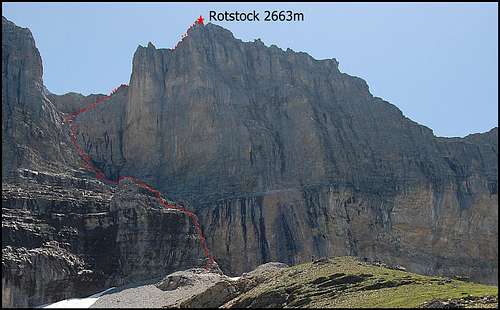
The via Ferrata route up the northern ‘front’ of the Rotstock, which can be accessed either from Kleine Scheidegg or Eigergletscher stations.
GETTING THERE
There is excellent access to and around Switzerland by road, rail and air. The road and rail network within the country is comprehensive – and of course, in Switzerland, the trains run on time.
The nearest main centres are Bern (capital) and somewhat nearer, Interlaken. From Interlaken, head south east through the valleys to either Lauterbrunnen or Grindlewald. The famous Jungfraujoch railway starts at both of these places – climbing rack and pinion tracks which intersect at the famous pass of Kleine Scheidegg, up at 2061m. There are networks of attractive paths criss-crossing the region and it is relatively easy to walk the same routes, albeit taking 3-4 hours as opposed to ¾.
At Kleine Scheidegg, the skyline is dominated by the holy trinity of Eiger, Monch and Jungfrau – three 4000m giants (well, the Eiger doesn’t quite top 4000m – but it deserves to). This is one of the most photographed views in the world – and for nearly 80 years people have come here to gaze hopefully through thoughtfully placed telescopes to catch a glimpse of the dare-devils (& clinically insane) climbing the North Face of the Eiger.
VIA FERRATA DESCRIPTION
This route doesn’t have the cliff-hangingness of the Allmenalp via Ferrata, or the vertiginous exposure of the Murren-Gimmelwald via Ferrata. Nonetheless it encroaches a tiny way into the forbidding territory of one of the most historic north walls in the Alps, if not the world. Taking this into account the quality of the route itself is mildly disappointing, with only modest exposure and short sections of easy scrambling. The attraction is in the setting, atmosphere and fantastic views.
The start of the Via Ferrata is easily reached inside an hour of grassy ascent from Kleine Scheidegg – or half an hour of undulating traverse from the higher Eigergletcher station.
The route ascends a small buttress which appears to bar access to a wide gulley between the Rotstock and Eiger – the only apparent breech in the more than mile long continuity of the north wall. As the buttress is approached, via a whale-back grassy ridge, a series of short ladders become visible adorning the buttress, which is perhaps about 100m high.
On reaching the foot of the buttress the start is fairly obvious, up a few metres of easy scramble to the first of half a dozen ladders. Each ladder ascends a little section of about 4-5m of vertical and in between are sections of less steep scrambling or the odd horizontal ledge. All of the climbing on the buttress whether on ladders or scrambling, is protected by cables – to clip onto with Via Ferrata kit lanyard.
Above the buttress the route now follows a shaley path vig-zagging up towards a small level area before another and less steep buttress, again apparently barring the way. The next bit of scrambling starts at the right hand lower end of this buttress near a stream and a little alcove tunnelled into the rock – presumably a ventilation shaft for the Junfraubahn railway tunnel, which will be under the mountainside at this point.
Again, with a cable to clip into, the buttress is easily climbed to access another recess, composed of shaley ledges at the start of the upper half of the broad gulley. The route continues to zig-zag upwards, occasionally protected by cables. Eventually there is a long rising traverse, heading straight towards the upper part of the Rotstock, the top of which is quite close now.
Although not difficult, the route is very scenic, surrounded by forbidding walls of vertical limestone on 3 sides. The scrambling looks harder than it actually is and the cable is barely necessary.
At the end of the rising traverse the route pops out of the shadowy world of the north face, out into the sunny side of the mountain. There is a wide open shaley space, level for a short distance, but soon gently rising towards a prominent snow-field and the blocky buttresses of the lower Eiger west flank. Looking down, the slopes drop off downwards over loose rubble and ledges towards the Eigergletscher station. Immediately above is the steep but easy scrambling up the final few metres to the top of the Rotstock. The summit cross is visible.
DESCENT FROM ROTSTOCK
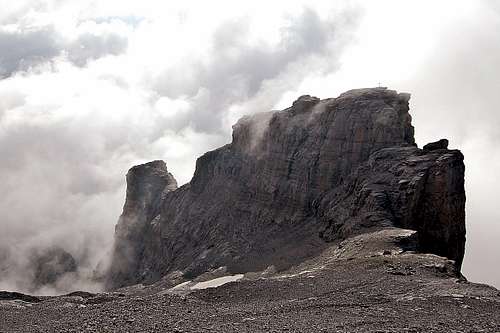
The top part of the Rotstock showing start of the descent to Eigergletscher station down to the left.
If returning to Kleine Scheidegg, it isn’t difficult to reverse the Via Ferrata and climb back down the route of ascent. It would depend on how many were on the route. If many other parties were around then descent this way may be better avoided due to the potential for knocking loose rocks down – or anticipated difficulties passing in different directions on the ladder sections of the lower buttress. But on the 3 occasions I have been on the route, twice going up and once coming down from the Eiger west flank, there were at most one or two other parties around.
Most would descend the slopes down towards the Eigergletscher station. A series of ‘stone-men’ or cairns, mark the way. It isn’t difficult, but care is needed since it is loose and short rock steps composed of downward dipping strata of classic ‘Eiger’ slatey rock. There are usually a few sections protected by little bits of fixed rope – but again, care needed since the rope I have encountered here is of variable vintage – some seemingly quite old – although doubtless local guides keep an eye on it from time to time.
HAZARDS
The north wall of the Eiger is notorious for sudden storms. The Via Ferrata follows a natural water course and during any significant precipitation there would be a serious risk of stone-fall in all parts of the gulley that it ascends. Furthermore descent of the western slopes could be similarly hazardous, added to which route finding could be more tricky in cloud.
Any Via Ferrata is a danger in a thunderstorm, when any cables are liable to become giant lightning conductors.
RED TAPE
There is no ‘red-tape’ round the Rotstock. Permits are not required and use of the Via Ferrata is free.
As always, common sense rules apply round mountain country code – regarding disturbing of wildlife, not picking wild flowers, not leaving litter and being discrete round any bodily waste.
Common sense rules apply round the mountain railway. It is a bad idea to walk on the track – and an even worse idea to even think of entering the tunnel, a short distance away from Eigerglescher station. Assuming you didn’t get mown down by a train you would probably attract a hefty fine.
The Swiss mountain rescue service is well served by skilled helicopter pilots, who even manage to pluck the odd unfortunate (or ‘fortunate’ depending how you look at it) from the north face of the Eiger. However, their services are expensive and it is well worth being insured even doing modest routes such as these on the Rotstock.
THE MURDER WALL
For many, the little peak of the Rotstock is just a means to the end of getting up close to the notorious Mordwand – the ‘Murder Wall’ of the famous Eiger.
At a mile high and approaching 2 miles wide, this north face is to be seen to be believed. It is almost beyond comprehension that people have been climbing it since 1938 – and that solo ascents have now been made in less than 3 hours!
There are now many routes on the face, over and above the original 1938 route. And Base-jumpers now regularly hurl themselves from a particularly vertical place near the top of the west flank, from where you can merrily plummet for about 30 seconds before risking hitting anything. I have peered over the edge at this place – there is approaching 5000ft of empty space straight down.
According to Wikipedia, over 60 people have died on the Mordwand since people first started attempting it in 1933.
LINKS
Eiger
Jungfraubahn
Via Ferrata
Kleine Scheidegg
Allmenalp via Ferrata
Murren-Gimmelwald via Ferrata
Rotstock Klettersteig/via Ferrata
Weather


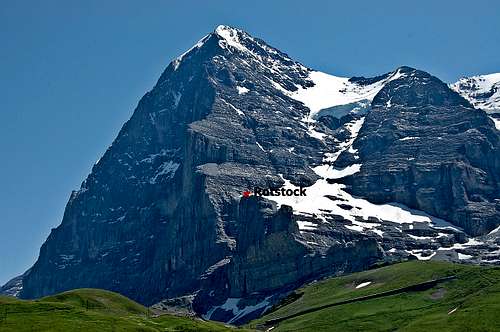

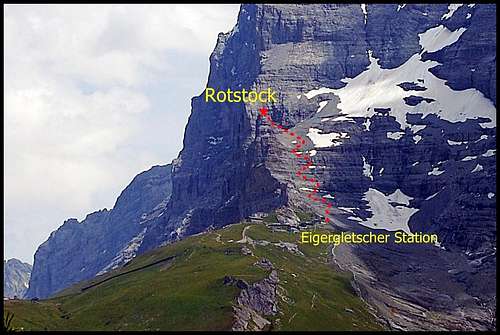
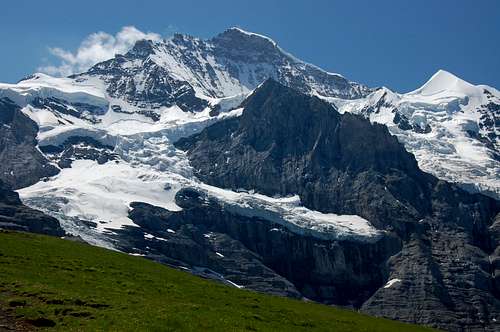
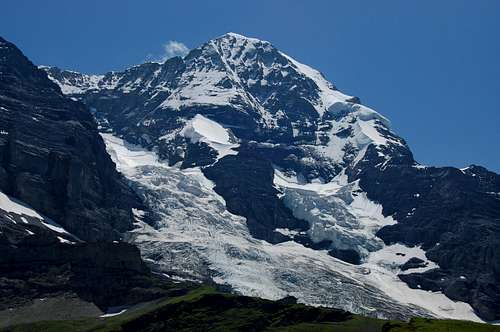
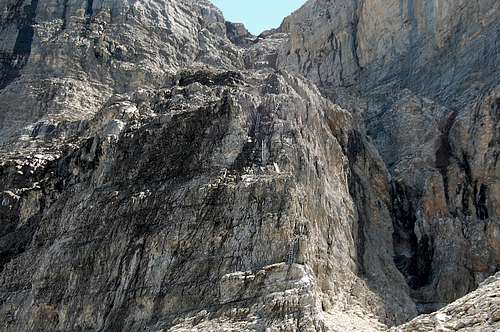
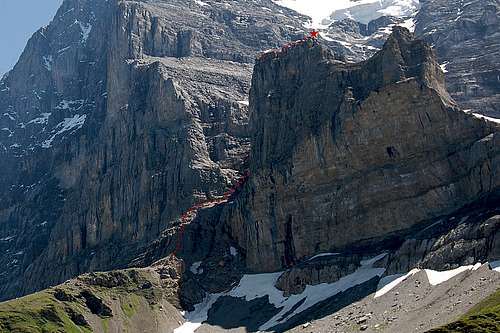




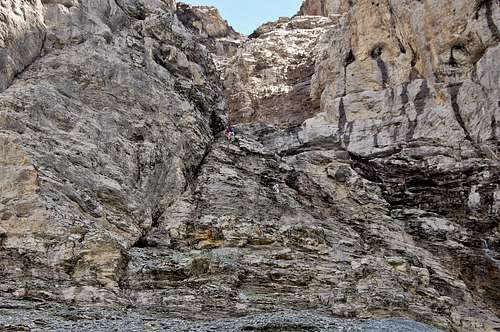
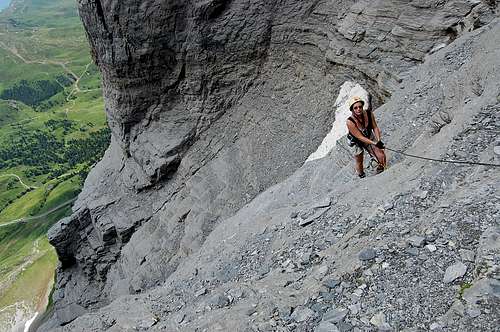
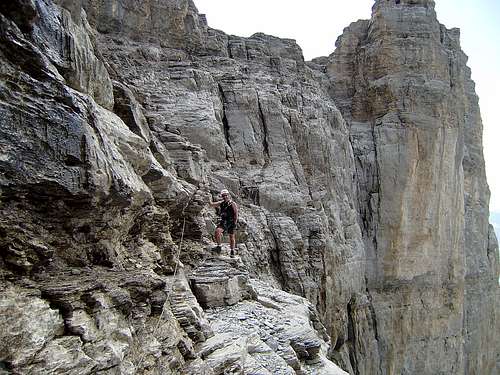
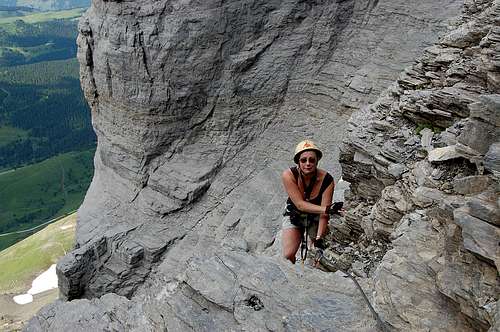
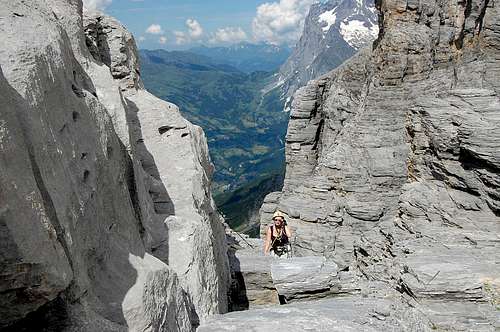

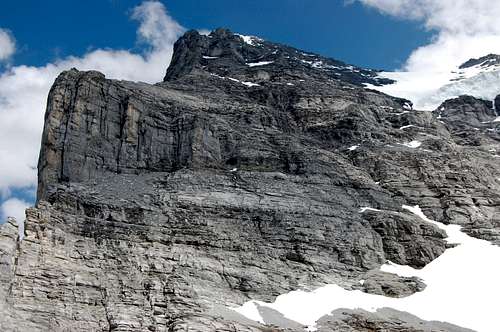
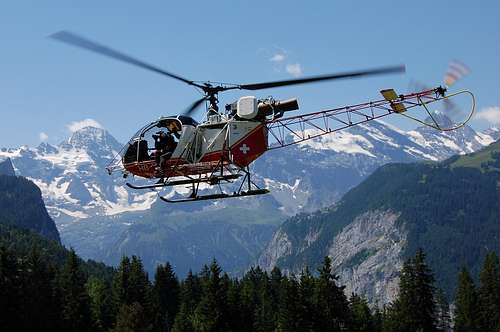
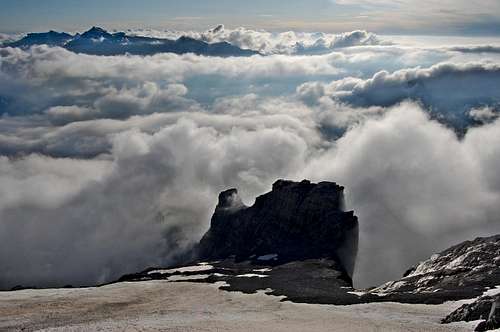
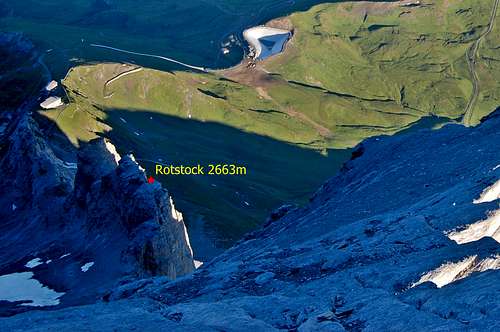

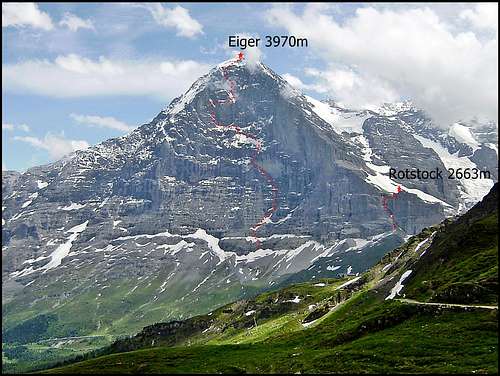
Mauntainfreak - Jan 8, 2016 5:03 pm - Hasn't voted
Climb on Via FerrataThis is a photo-gallery of the climb by the via ferrata. (click the photo):